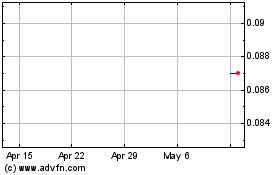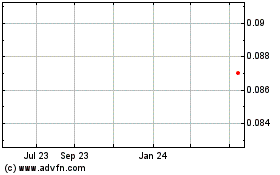Qantas Soars to Record Profit as Pain Pays Dividend
24 August 2016 - 6:30PM
Dow Jones News
SYDNEY—A first dividend payment in seven years marks a big
turnaround for Qantas Airways Ltd., which as recently as 2014 had
been selling terminals, deferring plane orders and laying off staff
to stem losses from a bruising battle for dominance in Australia's
skies.
It also comes as some of its biggest regional rivals, including
Cathay Pacific Airways Ltd., remain in a funk.
Qantas, known as the "Flying Kangaroo," on Wednesday reported an
85% rise in net profit for the year through June to A$1.03 billion
(US$780 million). The result, which Qantas said was the best in the
company's 95-year history, comes just two years after it posted a
A$2.8 billion annual loss amid a costly price war with domestic
rival Virgin Australia Holdings Ltd.
Qantas' recovery owes much to painful decisions made by
management who bet that defending the airline's 65% share of the
domestic market was more important than catering to yield-hungry
investors. In late 2013, Qantas set a target of saving A$2 billion
by flying its planes more, overhauling its fleet and reducing head
count.
Since then, Qantas has cut A$1.66 billion in annual costs and
said Wednesday that it is on track to save a total of A$2.1 billion
by next year, more than the A$2 billion initially expected.
"Essentially, without that we would have produced a loss," Chief
Executive Alan Joyce said.
Mr. Joyce added that Qantas' fuel hedges had saved it A$664
million compared with the prior year, as the airline avoided the
missteps in strategy that led Cathay Pacific's first-half net
profit to slump 82%. Earlier this month, Cathay reported a
fuel-hedging loss of HK$4.49 billion (US$579 million) after being
caught on the wrong side of swings in global oil prices.
Qantas investors were rewarded for their patience with a final
dividend of 7 Australian cents per share, representing the first
such payout since 2009. The airline also said it would buy back
shares worth A$366 million, bringing the total targeted capital
return to A$500 million. Qantas shares jumped on the result, rising
2.4% to A$3.48 at 0418 GMT to outpace the broader Australian stock
market, which was up 0.2%.
Qantas' bruising battle with Virgin Australia, which saw both
airlines add seats and slash airfares to woo customers, wiped
nearly A$1 billion from industry earnings from 2012 to 2014,
according to analyst estimates. Virgin Australia hasn't recovered
as quickly as Qantas, posting a A$224.7 million annual loss earlier
this month as it sought to remove unwanted aircraft from
service.
To be sure, both airlines continue to face turbulence even as a
truce in the capacity war holds. Qantas said Wednesday it didn't
expect to increase capacity on domestic routes in the six months
through December, and it may even fall by 1%.
The company said annual revenue from flying Qantas-branded
planes to regions of Australia that rely on the resources industry
fell A$121 million compared with the 2015 financial year, although
overall earnings before interest and tax at its domestic business
rose 20% to a record A$578 million.
On international routes, Qantas planned to increase capacity by
around 4% during the six months through December, with a lower
Australian dollar making the country a more enticing vacation
option for overseas travelers, especially from Asia and the U.S.
Qantas added that it expects to take delivery of 787-9 Dreamliners
from Boeing Co. starting in around 15 months, which could fly to
Europe and the U.S.
Meanwhile, the company's Jetstar budget carrier in Japan posted
its first full-year profit since it started flying in 2012.
"The Chinese market is booming, the Japanese market has been
exceptionally good," Mr. Joyce said. "We're seeing very strong
growth from the U.S."
Mr. Joyce, originally from Ireland, has led Qantas since 2008.
Before presiding over the loss two years ago, he made the
controversial decision in 2011 to ground Qantas' fleet amid a
dispute with its unions.
His actions came under intense scrutiny in Australia because
Qantas is one of the country's most well-recognized brands. Its
frequent flier program has some 11.2 million members, which is
about 47% of the Australian population, according to J.P. Morgan.
In comparison, programs from American Airlines Group Inc. and Delta
Air Lines Inc., the two biggest U.S. carriers by traffic, have 31%
and 29% penetration in the U.S., respectively.
On Wednesday, Mr. Joyce joined Australian Prime Minister Malcolm
Turnbull to greet returning athletes from the Olympic Games in Rio
de Janeiro. When asked whether he might leave Qantas following the
strong earnings, Mr. Joyce was unequivocal.
"As far as I'm concerned, I've still got a lot to do," he
said.
Write to Mike Cherney at mike.cherney@wsj.com
(END) Dow Jones Newswires
August 24, 2016 04:15 ET (08:15 GMT)
Copyright (c) 2016 Dow Jones & Company, Inc.
Virgin Australia (ASX:VAH)
Historical Stock Chart
From Feb 2025 to Mar 2025

Virgin Australia (ASX:VAH)
Historical Stock Chart
From Mar 2024 to Mar 2025
